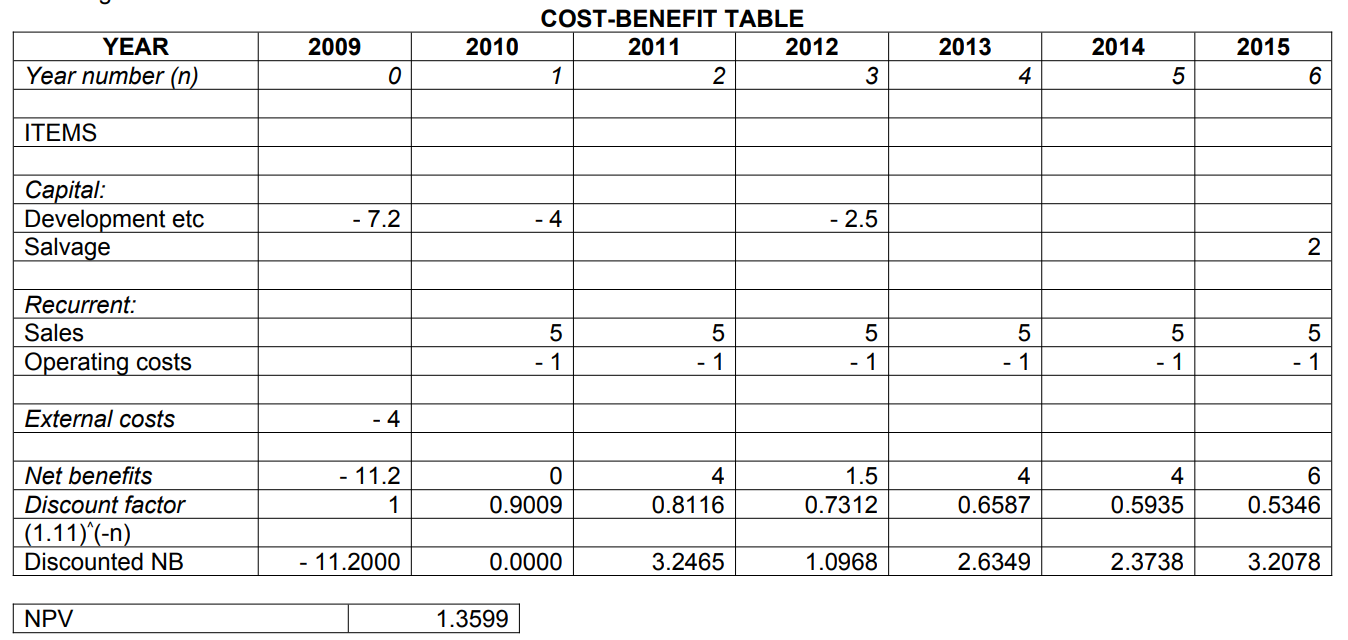Understanding Cost Benefit Analysis: Making Informed Decisions
Cost Benefit Analysis (CBA) enables individuals and organizations to make informed choices that maximize overall welfare

Ideas that impacts project management, business
Share This:Greetings from Sydney, Australia.  Shekhar here!
Shekhar here!
In this blog, I will explore some key concepts, "Understanding Cost Benefit Analysis: Making Informed Decisions".
(This is an article in a series. Read this current issue #1 of 8)
In Essence
Cost Benefit Analysis (CBA) is a powerful tool used to assess the potential benefits and costs of a project or decision. In this blog, we will delve into the fundamental concepts of CBA and its significance in decision-making. By carefully identifying the decision problem, considering constraints, exploring alternatives, and evaluating benefits, CBA enables individuals and organizations to make informed choices that maximize overall welfare.
-
The Overview
-
Carefully Identifying the Decision Problem
-
Identifying the Constraint
-
Identifying Alternatives
-
Identifying the Benefits
-
Identifying the Costs
-
Evaluation and using tools
Featured Resources
Making Informed Decisions
The Overview
Cost Benefit Analysis is a systematic approach that quantifies the benefits and costs associated with a decision or project. It helps in evaluating the feasibility and desirability of different options by comparing their monetary and non-monetary outcomes. CBA is essential because it enables policymakers, businesses, and individuals to assess the potential impacts of their choices on the economy, society, and the environment.
By considering the steps involved in conducting a CBA, we can gain a comprehensive understanding of this valuable decision-making tool.
Carefully Identifying the Decision Problem
To conduct an effective CBA, it is crucial to clearly define the decision problem at hand. This involves identifying the objectives, scope, and stakeholders involved in the decision-making process. By focusing on the specific problem and its context, we can ensure that the CBA addresses the key issues and provides meaningful insights into the decision.
Example: Should parkland areas be constructed in a certain manner or location? This question begs for critical analysis and merits careful consideration.
Identifying the Constraint
Every decision or project faces various constraints that must be acknowledged and considered during the CBA process. These constraints can be financial, distributional, managerial, or environmental in nature. By recognizing and analyzing these constraints, decision-makers can better understand the limitations and challenges associated with the proposed project.
In order to determine the feasibility of the project, it is crucial to examine the constraints that may hinder its success. Such constraints may involve a lack of financial resources to construct the Parkland, requirements for the equitable distribution of project benefits among various groups, or limitations on the quantity and quality of available staff to implement the project. Additionally, adherence to prescribed environmental protection standards must also be considered, as failure to meet them could negatively impact the success of the Parkland.
Identifying Alternatives
When undertaking a CBA, it is essential to identify and evaluate alternative options to the project under consideration. By exploring different courses of action, decision-makers can compare the costs and benefits associated with each alternative, allowing for a more comprehensive analysis and informed decision-making.
�
Identifying the Benefits
�
In this section, we explore the different types of benefits that should be considered in a CBA. These include the value of output, scrap value, avoided costs, productivity savings, external benefits, and reductions in unemployment. Additionally, it is vital to identify and assess the associated costs to provide a complete picture of the project's potential impacts.
To determine the success of a project, consider the following factors:
- Output value (reflected in revenues or consumer surplus)
- Scrap value of capital equipment
- Avoided costs (expenses that would have been incurred without the project)
- Productivity savings
- External benefits like improved health and environment (can be difficult to value)
- Reduction in unemployment (if shown to be a result of the project).
Identifying the Costs
When calculating the costs of a project, we take into account a range of factors, including:
- Capital expenses
- Operating and maintenance expenses for the expected lifespan of the project
- Labour expenses
- Costs of other inputs, such as materials, manufactured goods, transport, and storage
- Research, design, and development expenses
- Opportunity costs associated with using land or other resources
- External costs, such as air pollution, noise, loss of biodiversity, and loss of wilderness.
These costs are all carefully considered to provide an accurate estimate of the total project expenses.
Evaluation and using tools
CBA spreadsheet: This tool provides clear and concise calculations of the total net benefit and discounted net benefit, complete with NPV and/or IRR figures - all in the industry standard format. Simply input the necessary data and enjoy a comprehensive breakdown of your project's financial outlook, with years displayed in columns and items in rows for easy reference.
The Kaldor-Hicks compensation test: It is a welfare criterion used in CBA. It assesses whether a project or decision makes some individuals better off without making others worse off. By applying this test, decision-makers can evaluate the overall welfare implications of a project and determine its desirability from a societal standpoint
Keep Learning:
Call us on 1300 876 448
Cost Benefit Analysis (CBA) is a powerful tool used to assess the potential benefits and costs of a project or decision. In this blog, we will delve into the fundamental concepts of CBA and its significance in decision-making. By carefully identifying the decision problem, considering constraints, exploring alternatives, and evaluating benefits, CBA enables individuals and organizations to make informed choices that maximize overall welfare.

